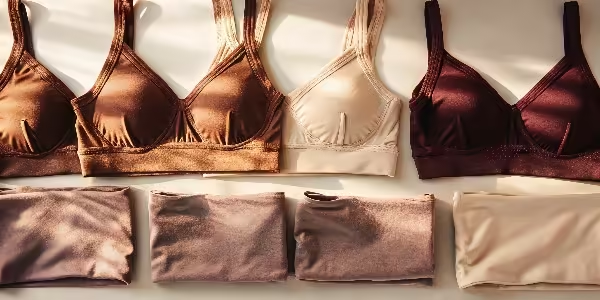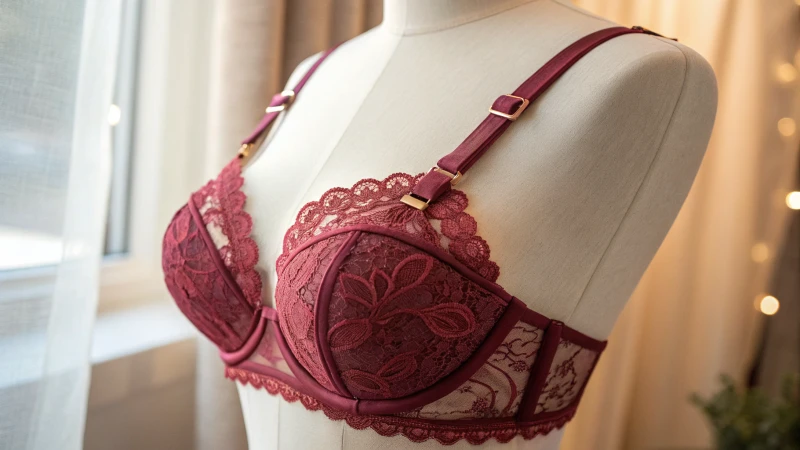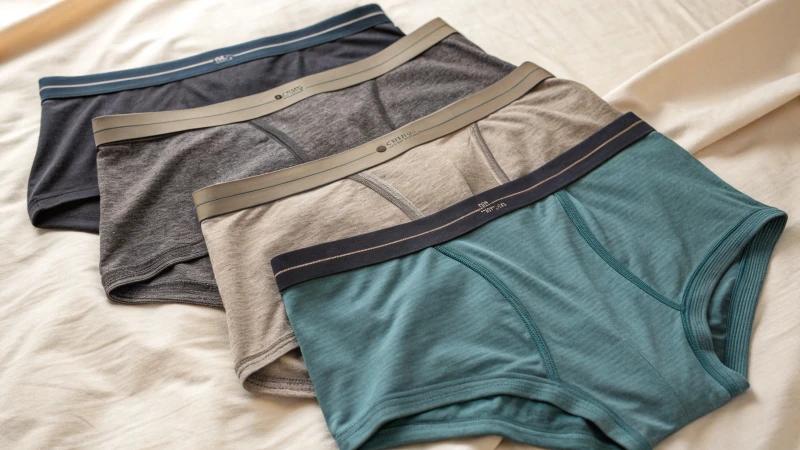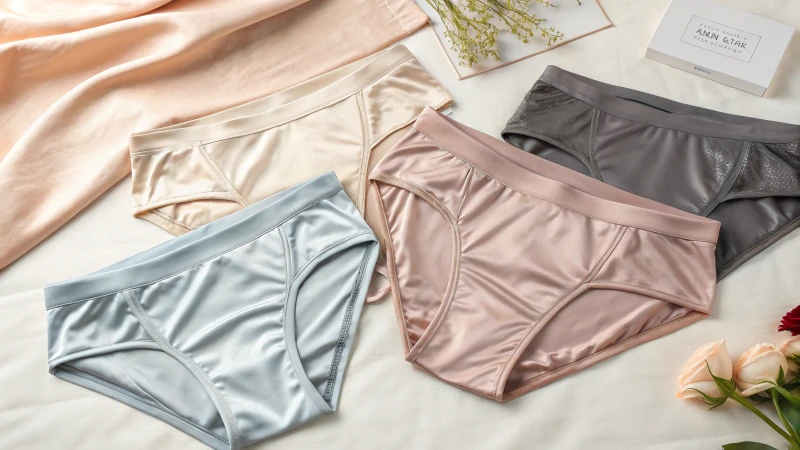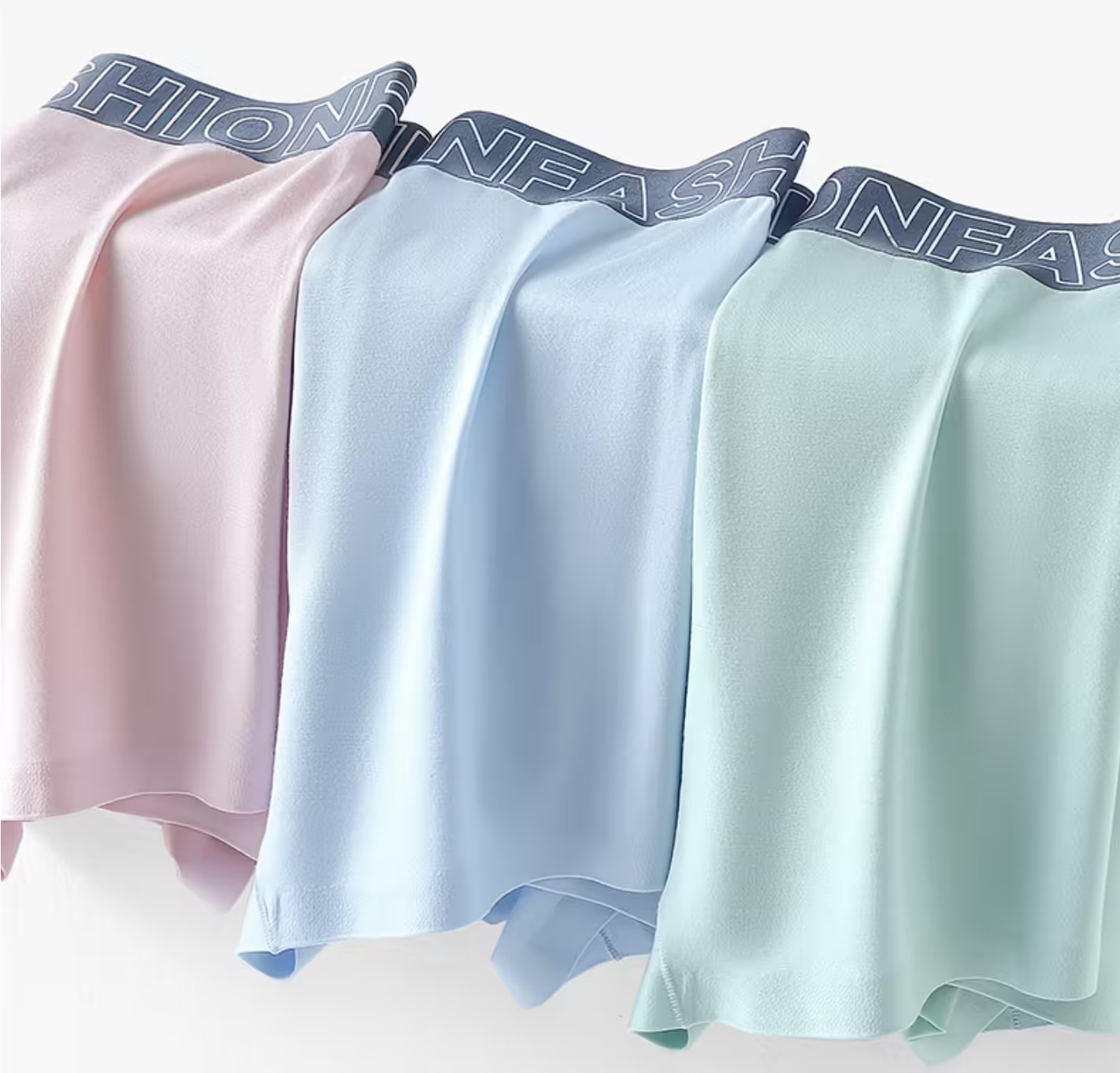
When I began to explore sustainable fashion, recycled materials really changed my perspective. These materials have great potential to transform.
Recycled materials are crucial for eco-friendly underwear brands. They significantly reduce waste and lower carbon emissions. A circular economy gets strong support by using these materials. We, the buyers who love the environment, find them very attractive.
Picture strolling through a field filled with thrown-away plastic bottles and seeing how they might turn into your new favorite underwear. Recycled fabrics do this. These materials offer an earth-friendly choice and give brands a special advantage in the changing fashion world. Companies use these materials. They gain attention and help build a green future. It's amazing! Many people like these efforts. They want to choose wisely.
Recycled materials reduce fashion industry waste by 50%.False
While recycled materials reduce waste, the exact percentage varies widely.
Sustainable underwear brands appeal to eco-conscious consumers.True
Eco-conscious consumers prefer brands that prioritize sustainability.
How Do Recycled Materials Reduce Waste in Fashion?
Have you ever imagined your old soda bottle transforming into a stylish jacket or trendy jeans?
Recycled materials in fashion reduce waste by turning trash into valuable items. These materials decrease landfill usage. Natural resources stay conserved. This supports a cycle where old items become new again. Eco-conscious consumers appreciate this approach.

The Process of Recycling in Fashion
Think about this: I once wore a jacket made only from used plastic bottles! These bottles, instead of polluting our oceans, become fibers for new clothes. This change saves energy and resources1. It gives new meaning to sustainable style. Using recycled materials helps brands reduce their carbon footprints.
Benefits of Recycled Materials
I visited a landfill once and felt shocked by the amount of waste. Knowing that fashion brands turn PET bottles into stylish clothes gives me hope. Using recycled polyester saves water and lowers greenhouse gas emissions compared to regular polyester. It’s like giving the planet a very needed break—a real breather.
| Material | Environmental Impact |
|---|---|
| PET Bottles | Reduced landfill and ocean waste |
| Old Textiles | Conserves water and energy |
Promoting Circular Economy
I find the idea of a circular economy2 very interesting. It focuses on reusing resources instead of throwing them away. More brands are joining this trend, using recycled fibers in their designs. This attracts eco-friendly customers like me and sets a new standard for sustainable production and consumption.
Consumer Trends and Brand Alignment
As someone who values sustainability, I’m happy to see more brands sharing eco-friendly values. By using recycled materials, these brands cut waste and improve their market positions. This approach strengthens brand loyalty3 and supports long-term success.
Examples of Brands Using Recycled Materials
I’m inspired by brands like Patagonia and Adidas. Patagonia has been a recycling leader, using materials like recycled polyester often. Adidas works with environmental groups to create shoes from ocean plastic. By supporting these methods, they cut waste and drive new ideas in sustainable fashion.
Brands embracing these practices not only contribute to waste reduction but also inspire innovation in sustainable fashion development. By prioritizing recycled materials, they pave the way for a more eco-friendly industry future.
Recycled polyester saves more water than traditional polyester.True
Using recycled polyester significantly reduces water usage compared to producing new polyester.
Adidas uses ocean plastic to make sneakers.True
Adidas partners with environmental groups to create shoes from ocean plastic waste.
What Is the Environmental Impact of Using Recycled Fabrics?
Have you ever thought about how our clothing choices impact the Earth?
Recycled fabrics help reduce harm to the environment by lowering waste and saving resources. These materials really support green practices. They attract customers who care about the Earth. Recycled textiles encourage a circular economy. They really do.

How Do Recycled Fabrics Cut Waste?
Recycled fabrics play a critical role in waste reduction. Picture plastic bottles and old clothes turning into new, stylish items. By repurposing materials like PET bottles and old textiles, they help decrease landfill and ocean pollution. I remember seeing a jacket entirely from recycled bottles. That moment opened my eyes to new ways to reduce waste. Recycling one ton of textiles can save up to 10 cubic yards of landfill space.
This process also reduces the need for virgin materials, further diminishing the environmental footprint4. Additionally, fashion brands using recycled materials contribute to a cleaner planet by encouraging responsible waste management.
Lowering Carbon Footprint Through Recycling
Recycled fabrics save a lot of energy. The production of recycled polyester, for example, uses 59% less energy than new materials. This helps decrease greenhouse gases significantly.
Moreover, choosing recycled fabrics means using resources wisely by utilizing existing resources. It means less need for petroleum-based raw materials. This shift not only conserves natural resources but also reduces pollution and carbon emissions linked to conventional textile production.
The Role of Recycled Fabrics in a Circular Economy
The circular economy champions recycled fabrics by promoting the reuse of materials. They replace the old "take, make, dispose" method with recycling and reusing. We need this change.
By supporting recycling initiatives, brands encourage sustainable practices that limit environmental degradation. They also pave the way for innovative textile technologies aimed at further enhancing sustainability.
Aligning With Consumer Values
Today’s shoppers care about eco-friendly products and are increasingly eco-conscious, seeking products that reflect their values. Recycled fabrics offer an eco-friendly option that makes products appealing to a broader market segment.
For businesses, incorporating recycled materials can enhance brand reputation and customer loyalty. It also opens avenues for marketing campaigns centered around sustainability, resonating with environmentally aware consumers.
| Benefits | Description |
|---|---|
| Waste Reduction | Minimizes landfill usage by repurposing textiles into new items like jackets from bottles. |
| Energy Efficiency | Uses 59% less energy in production compared to new materials like virgin polyester. |
| Consumer Appeal | Attracts eco-conscious customers seeking sustainable options in fashion brands' offerings. |
| Resource Conservation | Limits the need for new raw materials, preserving natural resources while lowering pollution. |
Recycled fabrics save 10 cubic yards of landfill per ton.True
Recycling one ton of textiles can indeed save up to 10 cubic yards of landfill space.
Manufacturing recycled polyester uses more energy than virgin.False
Recycled polyester production uses 59% less energy than virgin polyester.
How Do Sustainable Brands Appeal to Eco-Conscious Consumers?
Eco-friendly consumers often love products that respect the planet. Green individuals seek items created with care for nature. People appreciate goods that come from sustainable sources. Many customers enjoy buying things that use little energy or waste. Such choices help the Earth. Environmental impact matters. Sometimes, unique design draws attention. Natural materials often win favor. Eco-conscious shoppers choose wisely. Saving resources brings satisfaction.
Sustainable brands attract eco-conscious consumers by being open about their practices. They use green materials. Their stories match what buyers care about. These methods create strong bonds. Ethical and sustainable products appeal to them.
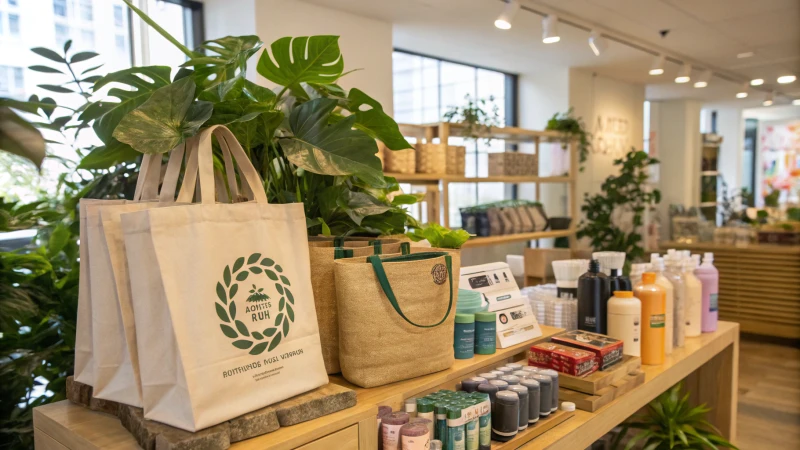
Prioritizing Clarity in Actions
Transparency builds trust. I recall when I first saw a brand openly sharing how it creates its products. It felt like meeting an honest friend in a secretive world. Openness nurtures trust, vital for people who care about the environment. When brands provide detailed supply chain5 information, whether on packaging or through engaging online content, they connect with those who value knowing the origins of their products. Knowing is powerful.
Initiatives for Brand Transparency:
| Brand | Initiative |
|---|---|
| Patagonia | "Footprint Chronicles" showcasing their supply chain. |
| Everlane | Transparent pricing and factory conditions. |
| Eileen Fisher | Programs for garment recycling and renewals. |
Using Earth-Friendly Materials
It's fascinating to realize that the shirt you're wearing was once a plastic bottle headed for the dump. People who think about the environment, like me, love brands that choose sustainable materials like recycled plastics or organic cotton. Showcasing the benefits of these materials connects to our beliefs and supports a circular economy6. This benefits the planet in a big way.
Examples of Earth-Friendly Materials:
- Recycled Polyester: Comes from PET bottles, cutting down waste.
- Bamboo Fabric: Naturally fights bacteria.
- Hemp: Uses less water than cotton.
Connecting with Consumer Values Through Narratives
Real storytelling brings strong emotional bonds. Once, I read about a brand cleaning a local beach and it really touched me. By sharing the effects of their efforts on communities or the earth, brands reach eco-conscious7 people on a deeper level. Such stories matter.
"We don't inherit the earth from our ancestors; we borrow it from our children." This thought lingers with me and others who are dedicated to sustainability.
Building Through Community and Advocacy
Joining a group that fights for the environment feels powerful. I attended a brand's event on sustainable fashion and felt inspired to see many with shared goals. Brands backing local projects or global campaigns like tree planting strengthen their reputation and build loyalty among those who are keen on sustainability.
Examples of Community Building:
- Working with environmental groups.
- Organizing eco-friendly fashion events.
- Offering ways for people to share their thoughts on sustainability.
By putting these plans into action, brands attract eco-friendly buyers and help the planet and people. Doing so increases loyalty and support among those who care deeply about preserving our world.
Transparency builds trust with eco-conscious consumers.True
Brands that openly share their processes appeal to eco-conscious buyers.
Eco-friendly materials do not attract eco-conscious consumers.False
Sustainable materials like bamboo and hemp align with consumer values.
What Challenges Do Brands Face in Adopting Recycled Materials?
Have you ever thought about why not every brand uses recycled materials?
Brands encounter challenges such as finding reliable materials, keeping quality and safety high, handling increased costs and managing consumer opinions when using recycled materials. These hurdles are important to overcome for sustainable production. Overcoming these obstacles is very important.
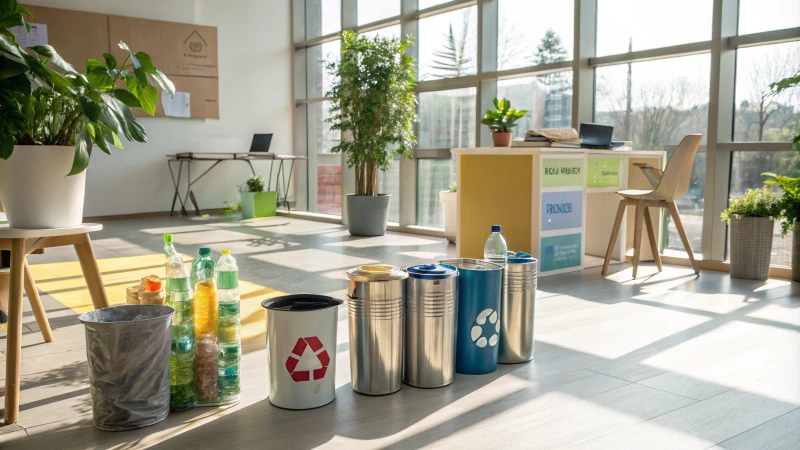
Finding Reliable Materials
Finding consistent and reliable sources of recycled materials is like hunting for the perfect ingredient in grandma's secret recipe. Consistent, high-quality recycled fibers are often hard to find, leading to potential production delays. Once, a project almost stopped because the supply of recycled materials disappeared. It's a really wild ride! The availability of high-quality recycled fibers can be limited, leading to potential delays in production schedules. Additionally, the recycling industry often struggles with variations in supply chain quality and quantity, making it hard for brands to ensure consistent material availability.
Checking Quality and Safety
I remember testing recycled fabric for the first time. It felt like expecting a chocolate chip cookie but getting raisins instead. Recycling changes material properties, affecting how strong and safe products are. This experience taught me the need for thorough tests and checks to keep our products excellent.
| Quality Challenges | Impact on Products |
|---|---|
| Inconsistent material properties | Reduced durability |
| Potential contamination risks | Safety concerns |
One of the primary concerns with recycled materials is ensuring they meet the same quality and safety standards as virgin materials. Brands must invest in rigorous testing and quality assurance processes to maintain product integrity.
Handling Higher Costs
The high cost of using recycled materials can shock you. The complex process involved raises expenses. I had to rethink my pricing strategy more than once to stay competitive without losing quality.
Adopting recycled materials often involves higher costs due to the complex processing required to turn waste into usable fibers. This can impact a brand's pricing strategy and profit margins. Brands need to evaluate the cost implications8 carefully and consider how these might affect their competitive position in the market.
Changing Consumer Perceptions
Even with more people wanting sustainable products, some customers still doubt the quality of recycled goods. Open conversations about environmental benefits and clearing up misconceptions with customers really help.
While there is a growing demand for sustainable products, consumers may still harbor doubts about the quality and performance of items made from recycled materials. Brands need to educate their audience about the benefits of using recycled materials, such as reduced environmental impact and conservation of resources.
To solve these problems, I have worked with industry experts9 on new solutions like advanced recycling technologies or partnerships with suppliers who specialize in sustainable materials. These efforts very much keep our sustainability goals on track by reducing obstacles.
Recycled materials always ensure cost savings for brands.False
Recycled materials often involve higher costs due to complex processing.
Quality assurance is crucial for products with recycled materials.True
Ensuring quality and safety standards is vital for product integrity.
Conclusion
Recycled materials are essential for sustainable underwear brands, reducing waste, lowering carbon footprints, and appealing to eco-conscious consumers while promoting a circular economy in fashion.
Learn how recycling minimizes energy use and conserves natural resources, crucial for sustainable fashion. ↩
Explore how the circular economy reduces waste and promotes sustainable practices in the fashion industry. ↩
Discover how aligning with eco-values can enhance brand loyalty and consumer trust. ↩
Explore this link to understand how recycling textiles minimizes landfill usage and helps combat environmental pollution. ↩
Learn how brands communicate their transparent supply chain practices to gain consumer trust. ↩
Explore how using eco-friendly materials contributes to a sustainable, circular economy. ↩
Discover storytelling techniques that resonate with environmentally aware consumers. ↩
Discover how using recycled materials can affect pricing strategies. ↩
Explore new technologies and partnerships that help brands use recycled materials effectively. ↩

